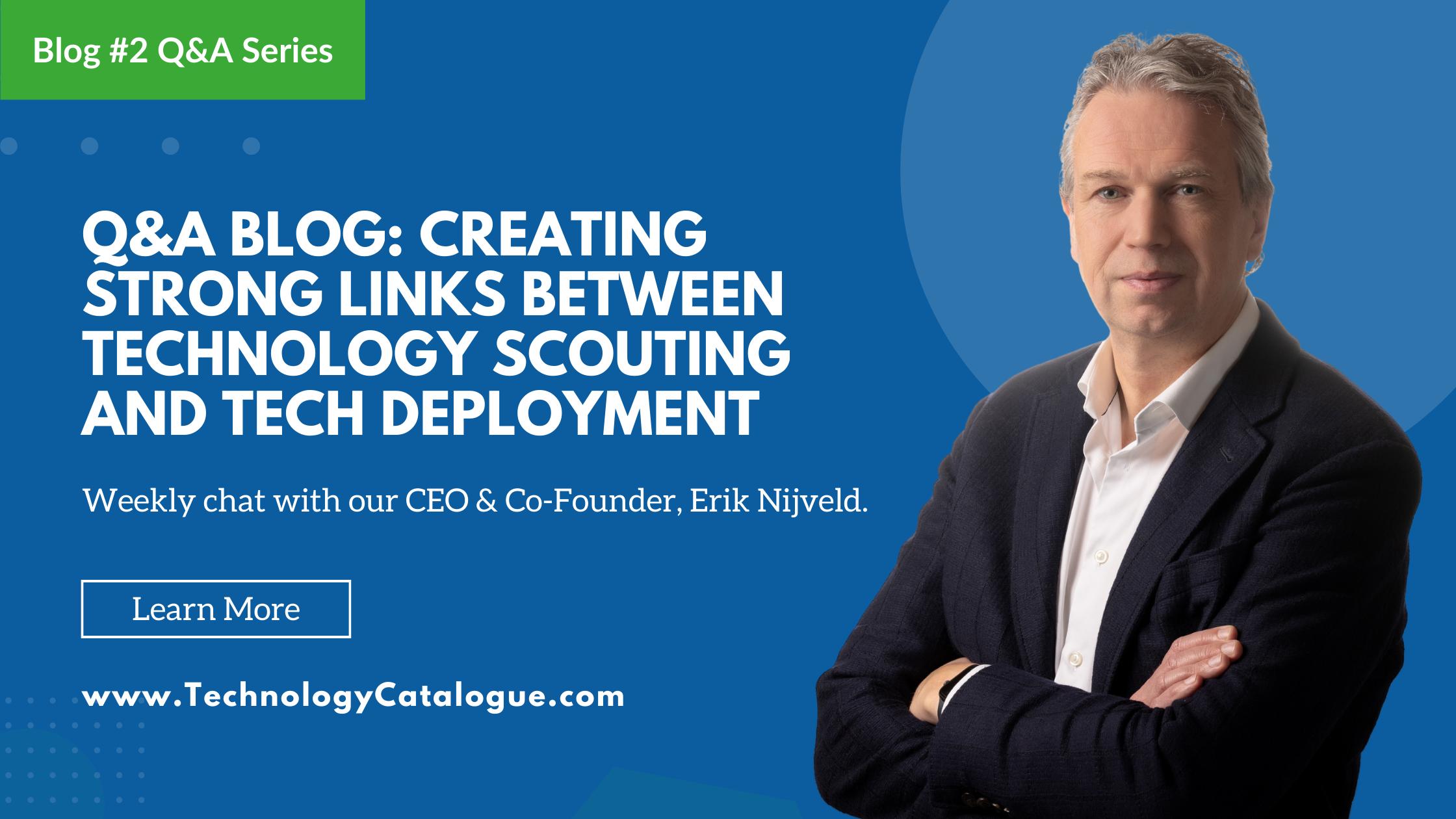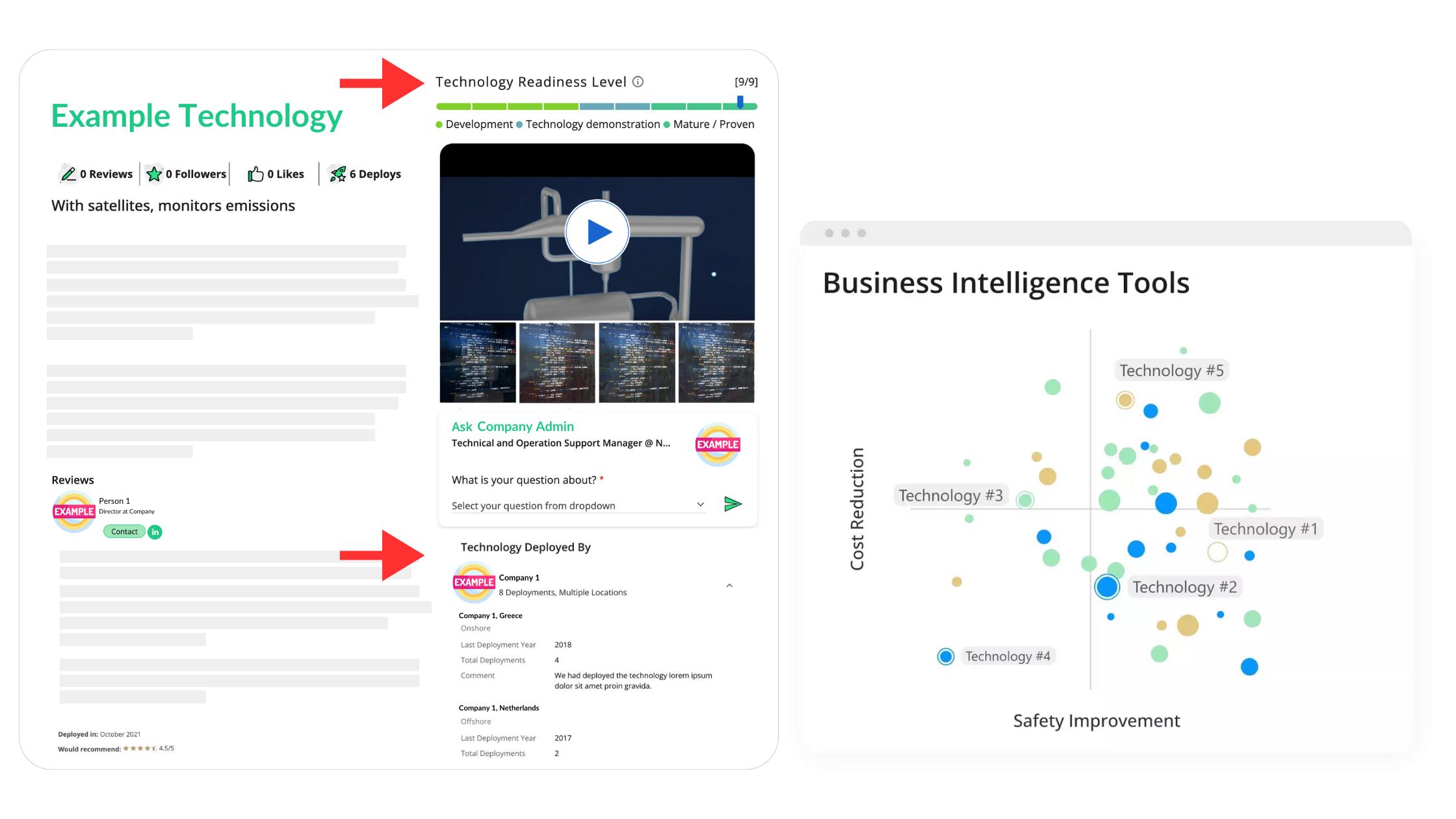
Welcome to our weekly Q&A blog series with CEO and Co-founder, Erik Nijveld. Last week, Erik shared his views on why companies need a Technology Deployment Manager, See blog here. In this week’s blog, we will be discussing the link between technology scouting and technology deployment.
Ready? So are we!
Erik, in last week’s blog, you highlighted the importance of creating strong links between technology scouting and technology deployment. Do many companies have this?
Not many I’m afraid! Many companies don’t have a focused technology deployment effort, and hence a link between technology scouting and technology deployment is often non-existent. As a result, the technology scouts don’t get a clear steer on what they need to look out for, and come up with technologies for which there is no clear business interest.
By creating a strong link with technology deployment activities, chances are increased that scouted technologies get deployed. In the end, as highlighted last week: tech scouting success doesn’t mean that you have identified hundreds of technologies. Success means that a significant percentage of scouted technologies get deployed, with value added to the business.
What is your advice to companies when it comes to technology scouting, how can companies get started?
The tech scouting activities need to be driven by the business needs of the company. And it’s equally important to define your technology strategy: in which areas do you want to be a technology leader, and in which areas do you want to be a follower?
And if you are a follower, which most companies are: which companies do you follow? It’s important to make this as explicit as possible. For example, if you’re a small UK Operator, a strategy that works perfectly fine is that you focus on technologies successfully used by other UK operators, or operators active in other parts of the North Sea.
If you’re a National Oil Company in the Middle East, then you may want to focus on what other NOCs have done, as well as the International Oil Companies active in the region.
If you want to be a technology leader, then it’s important to clearly articulate in which areas you want to be a leader. Even the large companies can’t be a leader in everything.
Going back to the example of the NOC: if you present a technology to a decision maker in the asset, and you can say: this technology meets our criteria, it has been successfully used by NOC A and B, and by IOC A, B and C, you have overcome a major hurdle. References give decision makers the confidence that the technology will also work in their assets and projects. Deployment references are simply the most powerful way to convince decision-makers.
So, by following this, technology scouting is more focused and successful?
Correct.
Of course, the moment you have found a solution, further work needs to be done before the deployment decision is taken. This includes technical aspects, as well as non-technical aspects. Actually, we have developed a methodology for that, the Technology Stress Test. With the Technology Stress Test, companies can assess whether all lights are on green to deploy a technology in an asset or project. We can talk about that in one of the future blogs of this series.
But it would be quite a waste of time and money to spend significant effort on in-depth assessments if a solution doesn't even meet the initial criteria!
In the case of new technologies, there may not be any deployment references yet. Does the approach still work?
If there are no deployment references yet, then the technology is at lower TRL levels, by definition. Hence this is the territory of companies that want to lead.
Before starting TechnologyCatalogue.com, I worked for many years as a Technology Deployment Manager at Shell. In my Shell days, I introduced many new technologies and we did that by using a portfolio approach. The approach is a bit like investing in shares. In your portfolio of shares, you want to have shares that have a high chance of delivering a good return. If your portfolio performs well, you may also want to slightly experiment, and invest in a few companies that are more risky, but potentially very rewarding.
The same approach works for technology.
If you go with one novel tech to an asset manager, then there is a low chance that he or she will accept. However, if it’s part of a portfolio of technologies, of which most are generating a solid return, then my own experience is that asset managers are willing to give it a chance. Provided of course that the risk of failure is acceptable.
The portfolio approach may not be needed if the technology is a true enabler; in other words: without it, a new project will not happen. Or an asset needs to stop producing. But there are not many examples of technologies that are a true enabler I’m afraid. In most cases, assets or projects have an alternative.
How does TechnologyCatalogue.com support companies with technology scouting?
As highlighted before: deployment references are the most important data to convince decision-makers. The platform makes it easy to find & select the right technologies, driven by deployment data insights.
Simply stated, we’re not just another scouting company. We help you to scout the right technologies: those with the highest chance to get deployed in your assets and projects.

what we offer
That’s all for this week.
In next week’s blog, Erik will discuss the different sources that companies use to find and select technologies. Stay tuned!
If there is a specific topic you would like Erik to focus on, let us know by sending your suggestions to info@technologycatalogue.com.
Do you want to be updated on new blogs? Follow us on Linkedin where we announce newly published blogs as soon as they are out!

.png)